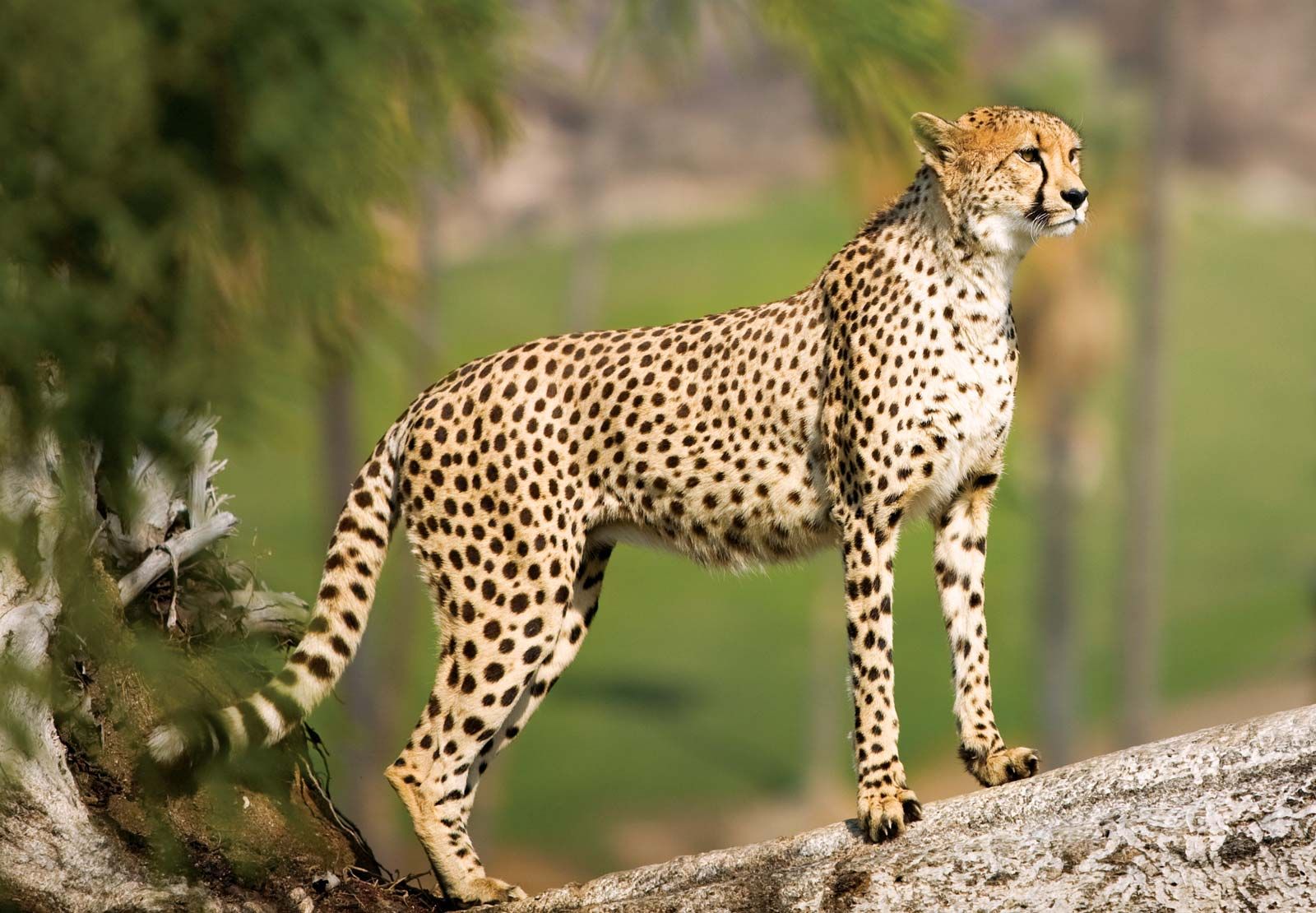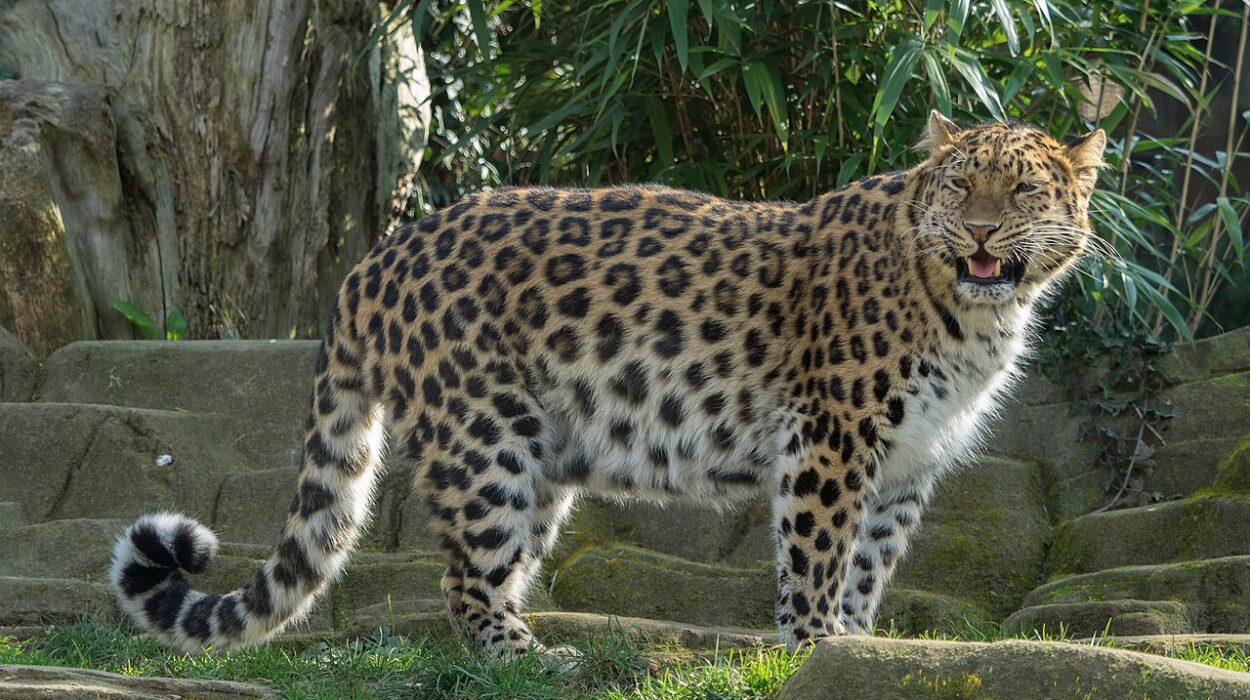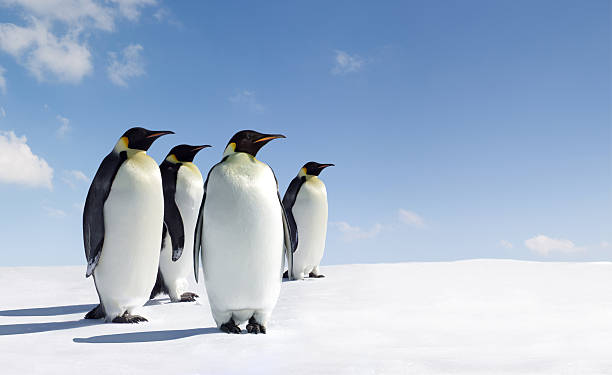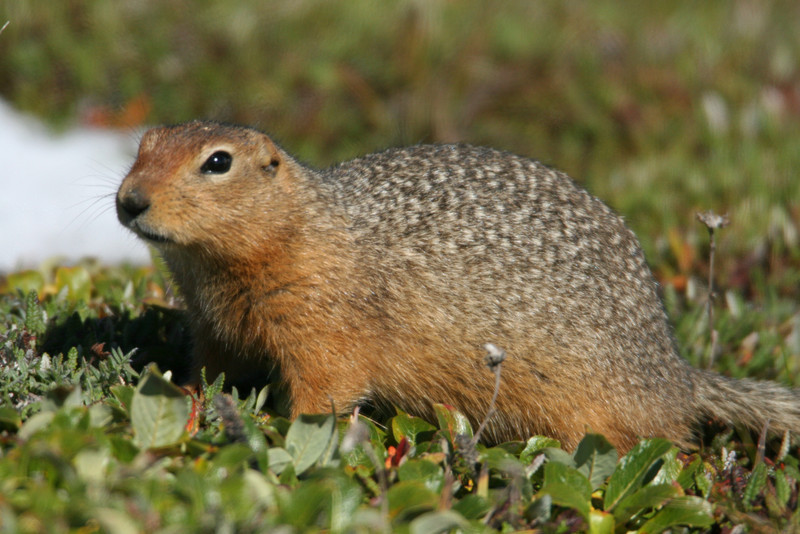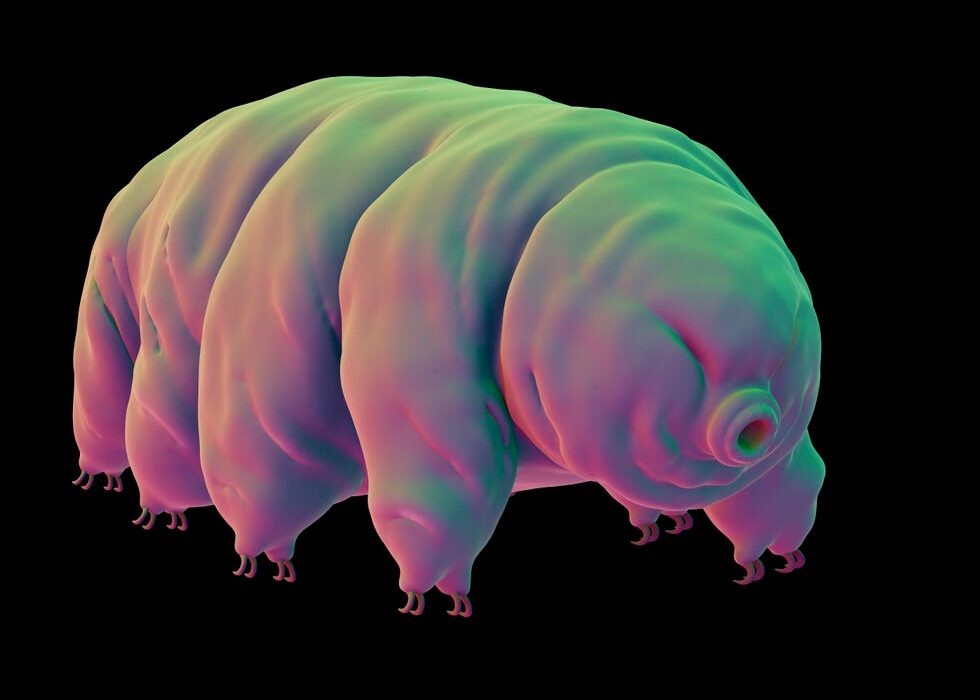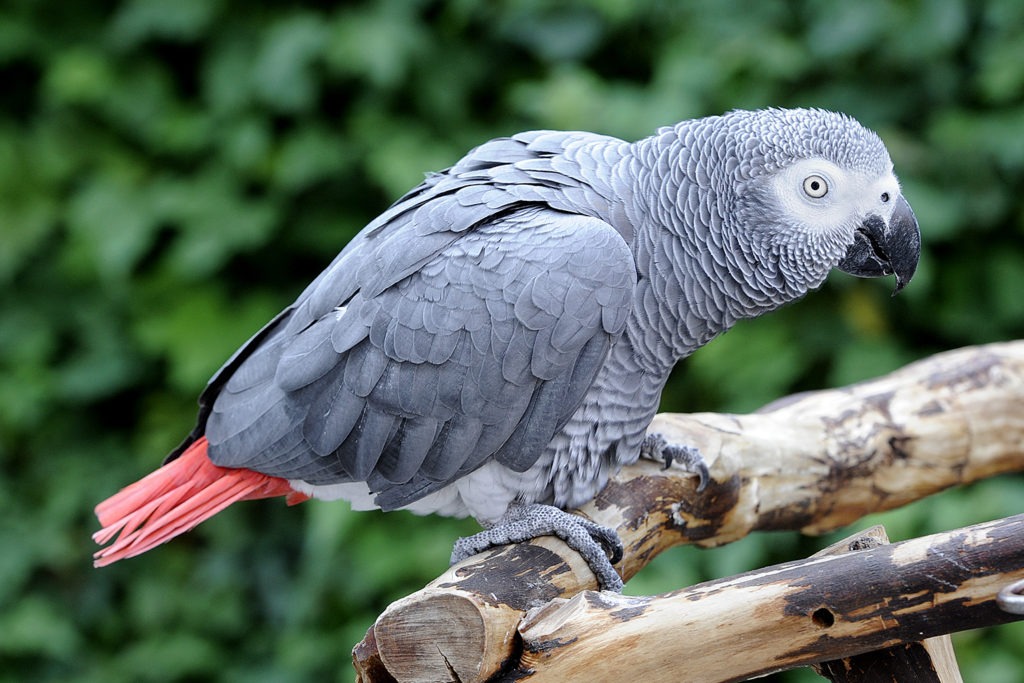Speed — that thrilling burst of power, the blur of motion that defies the stillness of the natural world. Among mammals, speed is not just a gift; it’s survival, competition, and poetry in motion. To be fast is to chase or escape, to hunt or flee, to feel the heartbeat of life pounding against time itself.
From the windswept savannas of Africa to the icy plains of the Arctic, mammals have evolved incredible adaptations for speed. Muscles, tendons, lungs, and bones have been honed by evolution to create some of nature’s most remarkable athletes. Each fast mammal tells a story — of endurance, of balance, and of the raw, beautiful struggle to stay alive.
Here are the fifteen fastest mammals in the world — a journey through the art and science of motion.
1. Cheetah – The Sprinting King of the Savannah
The cheetah is not merely fast — it is speed incarnate. When this slender predator bursts into motion, the air itself seems to bend around its form. The cheetah is the fastest land mammal on Earth, capable of reaching astonishing speeds up to 75 miles per hour (120 km/h) in short bursts of less than 30 seconds.
Every aspect of the cheetah’s body is crafted for acceleration. Its flexible spine works like a spring, extending and contracting with each stride, allowing the animal to cover up to 25 feet in a single bound. Its long tail acts as a counterbalance, guiding sharp turns at full speed. Large nasal passages flood its lungs with oxygen, and oversized adrenal glands fuel explosive bursts of energy.
But speed comes with a cost. Cheetahs overheat quickly, and their sprints are short-lived. Once the chase is done, they must rest and cool down before feeding. Yet in that brief dance of life and death, the cheetah displays the pinnacle of terrestrial velocity — a living embodiment of grace, power, and fleeting perfection.
2. Pronghorn Antelope – The Endurance Rocket of North America
If the cheetah rules the sprint, the pronghorn antelope reigns supreme over distance. Native to North America, the pronghorn can run at speeds of 55 miles per hour (88 km/h) — and, astonishingly, can sustain speeds around 35 miles per hour (56 km/h) for several miles.
Scientists believe the pronghorn’s endurance evolved to outrun now-extinct predators like the American cheetah. Its lungs and heart are disproportionately large, pumping oxygen efficiently through its body. Its lightweight frame and long, springy legs make it a master of open terrain.
Watching a herd of pronghorns race across the plains is witnessing pure persistence. They are not only fast — they are enduring symbols of survival in the harsh, windblown wilderness of North America.
3. Springbok – The Leaping Speedster of Africa
Graceful, agile, and lightning-fast, the springbok embodies elegance in motion. Reaching speeds up to 55 miles per hour (88 km/h), this South African antelope combines explosive acceleration with breathtaking acrobatics.
Springboks are known for a behavior called “pronking,” where they leap high into the air — sometimes more than 13 feet — while running. Scientists believe this serves multiple purposes: to confuse predators, signal fitness to mates, and express excitement or alertness.
Their muscles are finely tuned for elasticity, allowing them to convert energy efficiently between leaps. Their slender legs and streamlined bodies make them both quick and beautiful, embodying the harmony of power and poise found in the African plains.
4. Lion – The Power Sprinter of the Savanna
The lion may not match the cheetah in top speed, but few animals can rival its explosive strength. A male lion can reach speeds of up to 50 miles per hour (80 km/h) in short bursts, though only over distances of around 100 meters.
Unlike cheetahs, lions rely on ambush and teamwork. Their speed is paired with brute force — powerful muscles capable of tackling prey much larger than themselves. When a lioness charges, it’s not just speed at play; it’s strategy, coordination, and the precision of timing.
Every hunt is a ballet of motion and silence. For a few heartbeats, the lion becomes the embodiment of primal energy, a golden blur of muscle and determination tearing through the grasslands.
5. Thomson’s Gazelle – The Sprinting Spirit of the Grasslands
Small, delicate, and endlessly quick, the Thomson’s gazelle is a master of agility. Capable of reaching speeds of 50 miles per hour (80 km/h), this gazelle can change direction mid-sprint with astonishing precision, often evading predators that are faster in straight lines.
Its lightweight body and long, thin legs make it a perfect combination of power and balance. It doesn’t simply run — it dances through danger. When chased by cheetahs or wild dogs, its zigzag motion makes it unpredictable, turning speed into an art form.
Thomson’s gazelles live in constant motion, their lives a rhythm of grazing and sprinting, forever poised between predator and survival.
6. Wildebeest – The Marathoner of the Plains
The wildebeest is built for endurance rather than pure speed, yet it can gallop at up to 50 miles per hour (80 km/h). This large antelope, famous for its massive migrations across East Africa, moves in herds numbering in the thousands, covering hundreds of miles each year in search of water and fresh grass.
Their long legs and strong muscles are made for sustained travel. When chased, wildebeest rely on both endurance and collective defense — using numbers and agility to confuse predators.
In their thunderous migrations, they embody the heartbeat of the savanna itself — millions of hooves pounding across the earth in an ancient, unending race for life.
7. Quarter Horse – The Champion Sprinter of the Equine World
Among domesticated mammals, none can match the American Quarter Horse for sheer sprinting speed. In short distances, this horse can reach up to 55 miles per hour (88 km/h), outrunning even the fastest thoroughbreds.
Bred for agility and strength, the Quarter Horse dominates short-distance racing, rodeo events, and cattle work. Its massive hindquarters provide incredible acceleration, allowing it to reach top speed within seconds.
More than just power, the Quarter Horse possesses intelligence and responsiveness — essential traits for working alongside humans. Watching one explode out of the gate is to witness controlled fury, muscle and will working in perfect harmony.
8. Brown Hare – The Lightning Bolt of the Meadows
Few creatures embody the thrill of natural speed like the brown hare. Reaching speeds of up to 48 miles per hour (77 km/h), this European mammal is one of the fastest small animals in the world.
Its long, muscular hind legs act like springs, propelling it forward with incredible bursts of acceleration. The hare’s oversized eyes give it nearly 360-degree vision, allowing it to detect predators from afar and react instantly.
When pursued by foxes or birds of prey, the brown hare performs rapid zigzags and sudden stops, using agility as much as speed. It’s a reminder that survival often belongs not just to the swift, but to the clever.
9. Elk – The Majestic Sprinter of the Forest
The elk, or wapiti, may look heavy and slow, but this North American giant can run at 45 miles per hour (72 km/h). During the rutting season, males race across forests and meadows, their muscles rippling beneath thick fur, chasing rivals or herding females.
Despite their size, elk are remarkably agile. Their long legs and powerful muscles help them navigate rough terrain with surprising speed. Predators like wolves rarely catch a healthy adult — a testament to their endurance and awareness.
The sight of an elk sprinting through mist-covered meadows at dawn is one of nature’s quiet miracles — a blend of power, grace, and untamed beauty.
10. African Wild Dog – The Relentless Runner
Known for their painted coats and cooperative spirit, African wild dogs are among the most efficient hunters on Earth. While they can reach speeds of 44 miles per hour (70 km/h), their true strength lies in endurance.
Unlike cheetahs, wild dogs don’t rely on short bursts; they maintain high speeds for long distances, exhausting their prey through teamwork and persistence. Their hunts are carefully coordinated, often boasting success rates above 80%.
Every chase is a symphony of strategy — one dog herds, another cuts off escape, while the rest close in. Speed, stamina, and communication blend seamlessly in one of nature’s most efficient predator teams.
11. Greyhound – The Canine Rocket
The greyhound is the fastest dog breed in the world, capable of reaching 45 miles per hour (72 km/h) within seconds. Bred for racing and hunting, its sleek body, deep chest, and long legs make it a natural sprinter.
Its double-suspension gallop — where all four legs leave the ground twice in each stride — mirrors that of the cheetah. This efficient movement allows greyhounds to maintain top speed gracefully and safely.
Beyond their athleticism, greyhounds are gentle, calm companions. In them, nature’s engineering meets human compassion — speed born of evolution, tempered by domestication.
12. Kangaroo – The Bounding Athlete of Australia
The kangaroo may seem unconventional on this list, but make no mistake — it’s a speed marvel. Red kangaroos can reach speeds up to 44 miles per hour (70 km/h) and sustain around 25 miles per hour (40 km/h) for long periods.
Their unique hopping motion, powered by massive hind legs and elastic tendons, makes them incredibly energy-efficient. Each leap stores and releases kinetic energy, allowing them to travel long distances with minimal effort.
Kangaroos embody the elegance of motion in its purest form — a rhythm of balance, bounce, and boundless strength.
13. Onager – The Desert Racer
The onager, a wild relative of the donkey found in parts of Iran, Mongolia, and Central Asia, is one of the fastest long-distance runners in the mammal kingdom. Capable of reaching 43 miles per hour (70 km/h), it thrives in open desert landscapes.
Adapted to arid environments, onagers rely on speed to escape predators and cover vast territories in search of food and water. Their muscular legs and efficient lungs make them tireless travelers.
Though less famous than horses or antelopes, the onager’s quiet endurance across unforgiving deserts tells a timeless story of adaptation and strength.
14. Hyena – The Stealth Sprinter
Often underestimated, the spotted hyena can reach speeds of 40 miles per hour (64 km/h) when pursuing prey. Their running endurance is extraordinary — they can chase targets for several miles without slowing down.
Hyenas’ sloped backs and powerful forequarters give them immense stamina. Unlike lions, they don’t rely on stealth alone; they run their prey to exhaustion. Their intelligence and teamwork further enhance their hunting efficiency.
In the moonlit African night, the laughter of hyenas signals not mischief but mastery — creatures perfectly evolved for both speed and endurance.
15. Reindeer – The Arctic Sprinter
In the icy wilderness of the far north, the reindeer proves that even in the harshest climates, speed can be life-saving. These resilient mammals can run at speeds up to 37 miles per hour (60 km/h), outrunning wolves and traversing snow-covered landscapes with ease.
Their hooves adapt to the seasons — spongy in summer for traction on soft ground and sharp-edged in winter for gripping ice. Their long legs and muscular frames allow them to cover great distances during migration, sometimes more than 3,000 miles a year.
The reindeer’s speed is not about flash or spectacle — it’s about survival. It’s the rhythm of migration, the pulse of endurance in a frozen world.
The Science of Mammalian Speed
Speed is not just movement — it is the outcome of countless evolutionary innovations. Fast mammals share key traits: long, flexible spines for stride extension, large oxygen-rich lungs, powerful leg muscles, and minimal body weight relative to strength.
The shape of their limbs, the elasticity of their tendons, and even the composition of their muscle fibers determine whether they are sprinters like the cheetah or endurance runners like the pronghorn. Type II (fast-twitch) muscle fibers provide explosive bursts of energy, while Type I (slow-twitch) fibers sustain movement over long distances.
But perhaps the most vital factor is efficiency — the ability to convert energy into motion with minimal waste. Evolution, in its quiet genius, crafts each species for its specific role in the eternal race for survival.
The Poetry of Motion
There’s something deeply emotional about watching a mammal run at full speed — a fleeting glimpse of freedom and power, a reminder that motion is life’s purest expression. Whether it’s the cheetah’s breathtaking sprint, the wild dog’s relentless chase, or the hare’s desperate zigzag, every burst of speed is a story of instinct, adaptation, and will.
Speed, in nature, is not vanity; it is existence. It is the line between predator and prey, hunger and satisfaction, life and death. Yet beyond the science, there lies art — the choreography of muscles, the wind against fur, the silent conversation between creature and earth.
The Final Stretch
The fastest mammals in the world are more than biological marvels — they are emblems of nature’s brilliance. They remind us that life is movement, that power can be graceful, and that survival can be breathtakingly beautiful.
Each stride, each leap, each thundering heartbeat carries a message from the wild: that speed is not merely a race against time, but a celebration of it — a living testament to the endless, exhilarating energy of existence itself.
